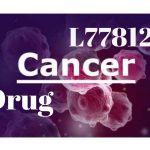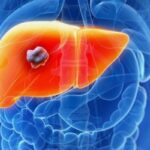History Of Drug Discovery And Development

The discovery of new drugs and the development of effective treatments for various diseases have been critical in the advancement of modern medicine. Today, we have access to a wide range of medications that help us manage and treat various health conditions. However, the process of drug discovery has been a long and complex journey that spans several centuries.
In this article, we will explore the history of drug discovery, starting from ancient times to modern-day research.
Ancient Times
The use of medicinal plants and herbs for the treatment of various illnesses can be traced back to ancient times. The Egyptians, Greeks, and Chinese all had well-developed medical systems that utilized natural remedies. For instance, the Ebers Papyrus, an ancient Egyptian medical text dating back to 1500 BCE, lists more than 800 plant-based remedies. The Greeks also used natural remedies, and Hippocrates, the father of modern medicine, believed that the body could heal itself if given the right conditions.
Medieval Period
During the medieval period, knowledge of medicinal plants and herbs continued to spread, and the study of medicine became more formalized. The Islamic Golden Age was a significant period of growth in medicine, and many texts from that time describe the use of natural remedies for various illnesses. One of the most influential texts was the Canon of Medicine, written by Persian physician Avicenna, which became a standard medical textbook in Europe for several centuries.
The Renaissance
During the Renaissance, the study of medicine continued to evolve, and new knowledge was gained through dissections and scientific observation. The Italian physician Paracelsus, who lived in the 16th century, believed that chemical compounds in plants and minerals could be used for medicinal purposes. He is often regarded as the father of toxicology, and his theories laid the groundwork for modern pharmacology.
19th Century
The 19th century marked a significant period of change in the field of medicine. The development of new technologies, such as the microscope, allowed scientists to study cells and microorganisms in greater detail, leading to the discovery of many new diseases. This period also saw the development of anesthesia, which made surgery safer and more effective.
One of the most significant discoveries during this period was the isolation of morphine from opium. Morphine was first isolated by German pharmacist Friedrich Sertürner in 1804 and quickly became a popular painkiller. However, its addictive properties also became apparent, leading to the development of alternative painkillers.
20th Century
The 20th century saw significant advancements in the field of drug discovery. The discovery of antibiotics, such as penicillin, revolutionized medicine and saved countless lives. Other significant developments during this period include the development of vaccines, antivirals, and chemotherapy drugs.
In the mid-20th century, drug discovery began to shift from natural remedies to synthetic compounds. Chemists began to create new molecules in the lab and test them for medicinal properties. One of the most notable examples of this is the development of the antihistamine drug diphenhydramine, which was first synthesized in 1943.
The 1960s and 1970s saw a boom in drug discovery, with many new drugs being developed to treat a wide range of diseases. The development of new technologies, such as computer modeling and combinatorial chemistry, allowed scientists to screen thousands of compounds for potential medicinal properties quickly.
21st Century
The 21st century has brought about new challenges in drug discovery. With many diseases becoming more complex and difficult to treat, scientists have had to develop new strategies for drug development. One such strategy is the use of biologics, which are drugs that are made from living cells or organisms. Biologics include things like monoclonal antibodies, which are used to treat cancer and autoimmune disorders.
Another significant development in the 21st century is the use of genomics in drug discovery. The Human Genome Project, completed in 2003, mapped the entire human genome and opened up new possibilities for personalized medicine. Scientists can now study how genes interact with drugs, leading to the development of more effective treatments that target specific genetic mutations.
The rise of artificial intelligence and machine learning has also had a significant impact on drug discovery. These technologies can analyze large amounts of data and predict the potential efficacy of new drugs, leading to faster and more efficient drug development.
The 21st century has seen a significant number of breakthroughs in drug discovery, leading to the development of new treatments for various diseases. Here are some of the top drug discoveries in the 21st century:
1. Imatinib (Gleevec): Imatinib was approved by the FDA in 2001 for the treatment of chronic myeloid leukemia (CML). It is a tyrosine kinase inhibitor that targets the abnormal protein produced by the Philadelphia chromosome, which causes CML. Imatinib has revolutionized the treatment of CML, with many patients achieving remission and living longer, healthier lives.
2. Herceptin (Trastuzumab): Herceptin was approved by the FDA in 1998 for the treatment of breast cancer. It targets the HER2 protein, which is overexpressed in some breast cancers. Herceptin has been shown to significantly improve survival rates in patients with HER2-positive breast cancer.
3. Avastin (Bevacizumab): Avastin was approved by the FDA in 2004 for the treatment of colorectal cancer. It is a monoclonal antibody that targets vascular endothelial growth factor (VEGF), a protein that promotes the growth of blood vessels. Avastin has also been approved for the treatment of lung, kidney, and brain cancer.
4. Keytruda (Pembrolizumab): Keytruda was approved by the FDA in 2014 for the treatment of melanoma. It is an immune checkpoint inhibitor that targets the PD-1 protein, which suppresses the immune system. Keytruda has been shown to be effective in the treatment of various types of cancer, including lung, bladder, and head and neck cancer.
5. Sovaldi (Sofosbuvir): Sovaldi was approved by the FDA in 2013 for the treatment of hepatitis C. It is a nucleotide analog inhibitor that targets the RNA polymerase enzyme, which is essential for the replication of the hepatitis C virus. Sovaldi has been shown to be highly effective in the treatment of hepatitis C, with many patients achieving a sustained virologic response.
6. Xarelto (Rivaroxaban): Xarelto was approved by the FDA in 2011 for the prevention of blood clots and stroke in patients with atrial fibrillation. It is an oral anticoagulant that targets Factor Xa, a protein that plays a key role in blood clotting. Xarelto has also been approved for the treatment of deep vein thrombosis and pulmonary embolism.
7. Humira (Adalimumab): Humira was approved by the FDA in 2002 for the treatment of rheumatoid arthritis. It is a monoclonal antibody that targets tumor necrosis factor alpha (TNF-alpha), a protein that contributes to inflammation. Humira has also been approved for the treatment of various other autoimmune diseases, including psoriasis, Crohn’s disease, and ulcerative colitis.
8. Victoza (Liraglutide): Victoza was approved by the FDA in 2010 for the treatment of type 2 diabetes. It is a glucagon-like peptide-1 (GLP-1) receptor agonist that promotes insulin secretion and lowers blood sugar levels. Victoza has also been shown to be effective in the treatment of obesity.
9. Harvoni (Ledipasvir/Sofosbuvir): Harvoni was approved by the FDA in 2014 for the treatment of hepatitis C. It is a combination of ledipasvir, a hepatitis C virus NS5A inhibitor, and sofosbuvir, a nucleotide analog inhibitor. Harvoni has been shown to be highly effective in the treatment of genotype 1 hepatitis C, with cure rates of up to 99%.
10. Ibrance (Palbociclib): Ibrance was approved by the FDA in 2015 for the treatment of advanced breast cancer. It is a cyclin-dependent kinase (CDK) 4/6 inhibitor that targets the proteins responsible for cell division. Ibrance has been shown to significantly improve progression-free survival in patients with hormone receptor-positive, HER2-negative advanced breast cancer.
11. Opdivo (Nivolumab): Opdivo was approved by the FDA in 2014 for the treatment of melanoma. It is an immune checkpoint inhibitor that targets the PD-1 protein. Opdivo has also been approved for the treatment of various other types of cancer, including lung, kidney, and bladder cancer.
12. Kalydeco (Ivacaftor): Kalydeco was approved by the FDA in 2012 for the treatment of cystic fibrosis. It is a cystic fibrosis transmembrane conductance regulator (CFTR) potentiator that helps to improve the function of the CFTR protein, which is defective in patients with cystic fibrosis. Kalydeco has been shown to improve lung function and reduce the frequency of pulmonary exacerbations in patients with cystic fibrosis.
13. Spinraza (Nusinersen): Spinraza was approved by the FDA in 2016 for the treatment of spinal muscular atrophy (SMA). It is an antisense oligonucleotide that helps to increase the production of the survival motor neuron (SMN) protein, which is deficient in patients with SMA. Spinraza has been shown to significantly improve motor function and survival in patients with SMA.
14. Zolgensma (Onasemnogene abeparvovec): Zolgensma was approved by the FDA in 2019 for the treatment of spinal muscular atrophy (SMA). It is a gene therapy that delivers a functional copy of the SMN1 gene to patients with SMA. Zolgensma has been shown to significantly improve motor function and survival in infants with SMA.
15. Remdesivir: Remdesivir was granted emergency use authorization by the FDA in 2020 for the treatment of COVID-19. It is a nucleotide analog inhibitor that targets the RNA polymerase enzyme of the SARS-CoV-2 virus. Remdesivir has been shown to shorten the time to recovery in hospitalized patients with COVID-19.
These drug discoveries have revolutionized the treatment of various diseases, leading to improved outcomes and better quality of life for patients. The development of these drugs has been made possible by advancements in technology and scientific knowledge, as well as collaborations between academia, industry, and regulatory agencies. However, there are still many unmet medical needs, and the search for new therapies continues.
Challenges in Drug Discovery
While drug discovery has come a long way, it still faces many challenges. One of the biggest challenges is the high failure rate of new drugs. Developing a new drug is a lengthy and expensive process, and many potential drugs fail in clinical trials. This can be due to safety concerns or lack of efficacy, among other factors.
Another challenge is the rising cost of drug development. Developing a new drug can cost billions of dollars, and many pharmaceutical companies are struggling to recoup their investment. This has led to criticism of the pharmaceutical industry and calls for more affordable drug prices.
Regulatory hurdles also present a significant challenge in drug discovery. In order to bring a new drug to market, it must go through a rigorous approval process by regulatory agencies such as the FDA. This process can take years and involves numerous safety and efficacy studies.
Conclusion
The history of drug discovery is a long and complex journey that has spanned several centuries. From ancient remedies to modern biologics, the field of drug discovery has evolved dramatically over time. While there have been many successes, drug discovery still faces many challenges, including high failure rates, rising costs, and regulatory hurdles. Despite these challenges, the development of new drugs remains essential in the fight against disease and the advancement of modern medicine.





